In Siddhartha Mitra’s lab, soot and other byproducts of combustion have their own stories to tell.
The Stories in Soot

ECU lab traces fire’s fingerprints through history
History — human history, the history of Earth, even the history of the universe — is made up of stories.
In East Carolina University’s Department of Geological Sciences, Siddhartha Mitra and his students are using black carbon — the soot, char and other chemical residues left behind by fire — to investigate and tell those stories. From meteorite impacts thousands of years ago to modern oil spills and other pollution, they use organic molecules to piece together and understand the events and processes that have shaped the world in which we live.
“Fires leave a very distinctive fingerprint of their presence in the form of organic molecules,” Mitra says.
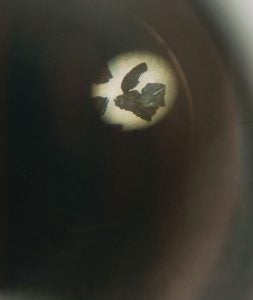
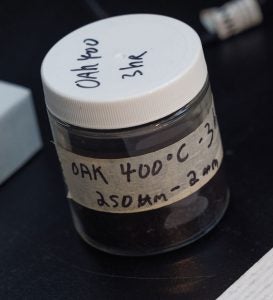
Comparing samples to known reference materials can reveal details such as how hot a fire burned and what materials it consumed.
In the lab are a variety of reference materials, created from known ingredients in laboratory-controlled combustion processes, such as charcoal created from burning grass, char from burning a specific type of wood or soot from automobile exhaust. For these reference materials there are extensive databases of information about their chemical composition, what they look like under a microscope, the conditions when they were created and more.
“Then we go out and get a sample,” Mitra says.
By studying the sample under a microscope or using extraction processes to isolate certain components, the researchers can compare the sample to known reference materials and begin to fill in pieces of the puzzle. A puzzle piece might be something such as the presence of levoglucosan, a chemical formed from the burning of wood, which survives only up to 475 degrees Celsius.
“So if I find that molecule in my sample of fire residue, I suspect that the fire was less than 475 degrees,” Mitra says.
“Fires leave a very distinctive fingerprint of their presence in the form of organic molecules.”
Siddhartha Mitra
The presence of other molecules can show what kind of material was burned — grasses versus hardwood trees, for example. “We put all these little pieces together of these different organic molecules, and eventually we may start seeing a shape, possibly a reconstruction of whatever caused that fire,” he says.
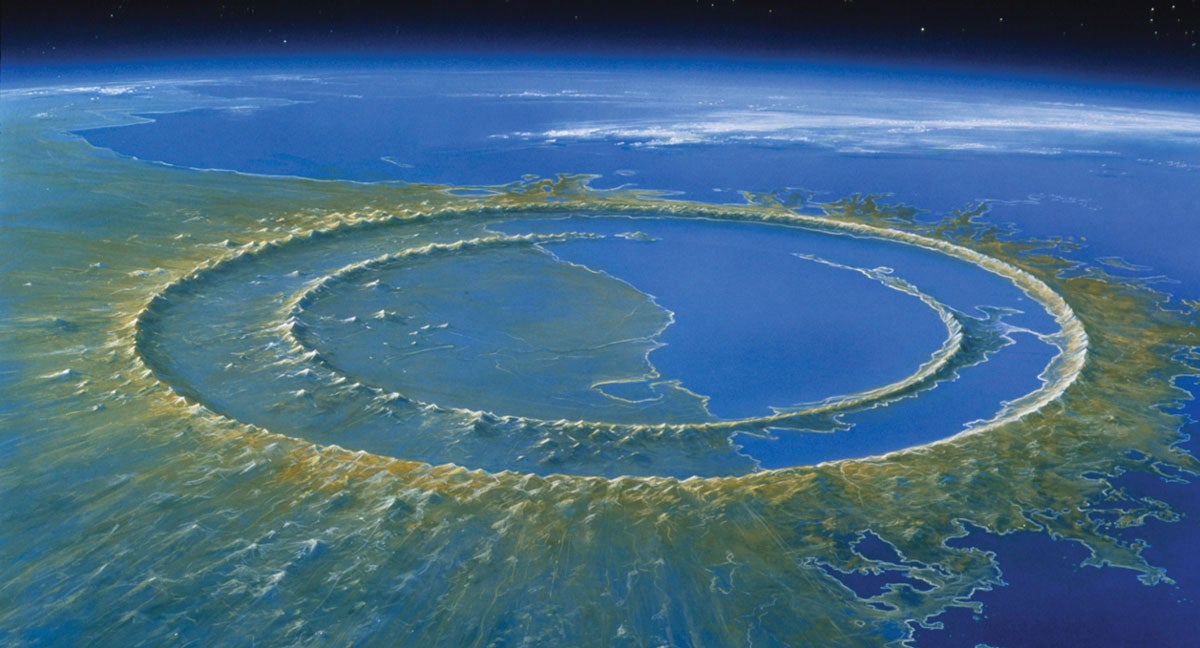
The Chicxulub crater on the Yucatan Peninsula is widely believed to be the impact site of an asteroid that caused the extinction of non-bird dinosaurs along with many other species. Sid Mitra and other researchers are investigating how and why the impact and associated burning affected the planet.
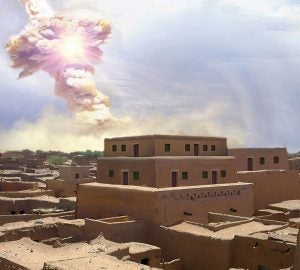
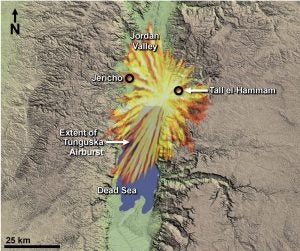
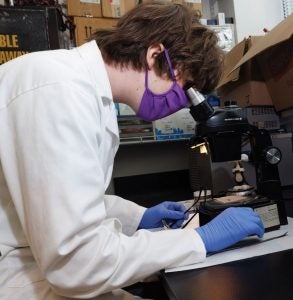
Sid Mitra’s analysis of soot samples from Tall el-Hammam supports the research team’s hypothesis that the city was destroyed by a high-temperature fire the civilization at the time could not generate. Above, a rendering shows what the site and the blast would have looked like. At right, this map illustrates the reach of a blast similar to the 1908 explosion over Tunguska, Russia, overlaid on the Jordan site.
Bottom right, master’s candidate Daniel Reed looks at burned oak through a microscope. Reed is investigating the pollution of Town Creek near downtown Greenville.
Ancient explosions, and a local creek burns
“We have a study funded by the National Science Foundation right now where we’re looking at the Chicxulub site … where a giant meteor hit the Yucatan Peninsula 66 million years ago. That event is thought to have wiped out 75% of the species of organisms on earth,” Mitra says (see more at adobe.ly/40ecpTt). He and other researchers are working to narrow down the type of burning that occurred afterward and how far it spread using samples from around the world.
In another project, Mitra joined an interdisciplinary team of researchers who presented multiple lines of evidence that the Middle Bronze Age city of Tall el-Hammam was destroyed by a cosmic airburst — a meteorite impact or the explosion of a meteor in the atmosphere. Mitra’s analysis of soot from the site showed the city burned at a temperature higher than any technology humans possessed at the time, indicating a huge external source of energy such as an airburst.
“One of the nice things about what I do is I usually collaborate with lots of people — anthropologists, biologists, chemists, modelers — because you really need a big team to tease out something that happened 50 million years ago, or even 100,000 years ago,” Mitra says.
Mitra’s lab also provides opportunities for student research. Doctoral student Rachel Wheatley is working on the Chicxulub project, while master’s candidate Daniel Reed is investigating a more contemporary question — that of pollution in Town Creek near downtown Greenville.
“Town Creek had all this hydrocarbon seeping into it from all the fuel tanks throughout Greenville, and it eventually caught fire,” Mitra says.
A great deal of work has gone into cleaning up the creek, and Reed is working to determine whether and how much of that oil seepage is still present and potentially flowing into the Tar River. Oil is simply an uncombusted fuel source, Mitra points out, so many of the same techniques are used to analyze what it is and where it came from.
Studying sediment in Africa
For master’s student Michael Zigah, working in Mitra’s lab was a matter of fate once he heard about a project analyzing sediment samples from Lake Bosumtwi in northern Africa.
“I grew up in Ghana, right near there,” Zigah says. “And the lake was just a huge feature there, like people take their kids on vacation and school trips.”
Mitra says he was blown away to find a student familiar with a particular lake 5,000 miles from Greenville. “I said, ‘Well, this project is obviously meant for you to work on.’”
Zigah is using the samples to trace the history of fires in northern Africa, tying them to cycles of climate and vegetation in the region, which hasn’t always been desert. Understanding the changes in the region over thousands of years could be useful in understanding and predicting the climate changes taking place today, he says.
Mitra says he loves seeing the progress his students make in the lab and the classroom.
“When they start off, sometimes you can see they’re struggling,” he says. “But then by the end of the process as they’re defending their thesis, it’s just like a transition has happened — they’ve become this incredible scientist. And I love to see that.”
Mitra, who serves as director of the integrated coastal sciences doctoral program, also encourages his students to publish their work and present at conferences.
“A data set inside of the lab isn’t doing anyone any good,” he says. “So go out and give a seminar. Publish these results in a scientific paper. … Some of our students have been in the press for their research, and the more they get that exposure, the more training they get as a science communicator. That’s a really critical part of science that I think is often overlooked.”
As an organic geochemist, Mitra says his lab involves more chemistry than most geology labs, so it can be a steep learning curve for his students, but the exposure has been beneficial for many.
“They have told some really great stories,” he says. “And that’s part of the joy of being a professor in academia — to be able to tell these stories with students and other scientists.”
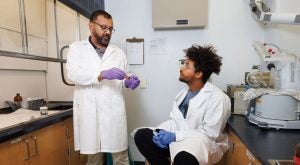
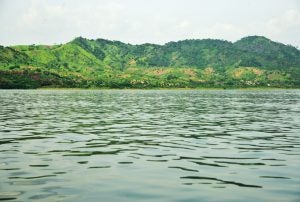
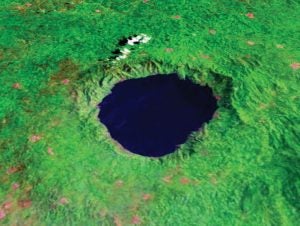
At top, Sid Mitra talks about diesel soot with master’s student Michael Zigah.
Zigah is studying burn from Lake Bosumtwi, a crater impact lake and the only natural lake in Ghana.